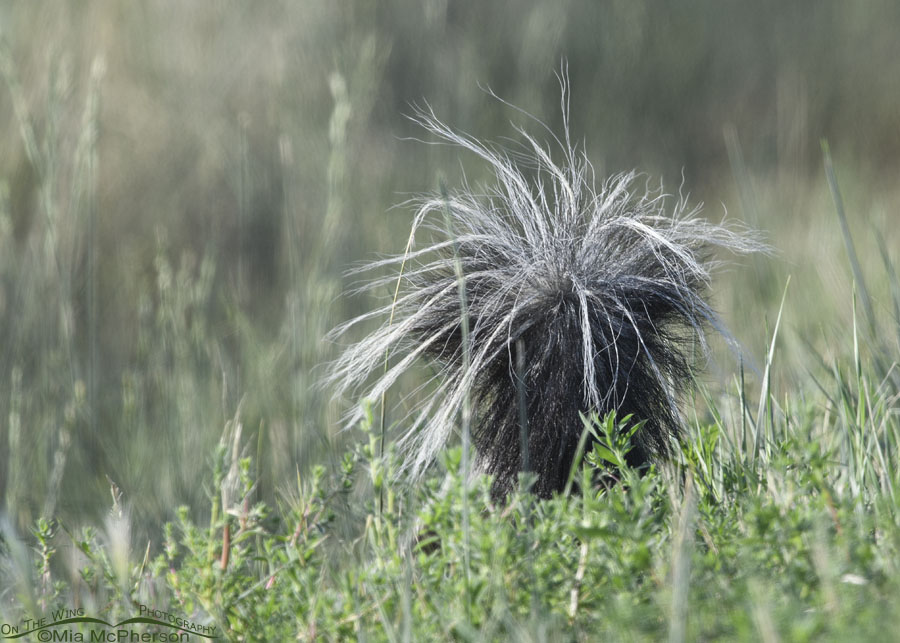
Striped Skunk Images, Facts, and Information:
Mephitis mephitis
- Striped Skunks are easily recognizable due to their distinctive coloration, featuring black fur with a white stripe on their snout and forehead, a white patch on their nape, and a V-shaped white marking on their back. They also have black eyes, short ears, and small triangular heads.
- Striped skunks are adaptable to a diverse range of habitats, including forests, woodlands, plains, ravines, suburban neighborhoods, urban areas, scrublands, riparian areas, and marshes.
- During the spring and summer months, Striped Skunks mainly consume insects, such as grasshoppers, crickets, beetles, larvae, and social insects like bees. They may also eat non-insect arthropods like worms and crayfish. In the winter, they tend to eat small mammals like voles, as well as the young and eggs of birds that nest on the ground.
- The gestation period of a Striped Skunk lasts approximately 59 to 77 days and commences after a period of delayed implantation that can last up to 19 days. A litter of 2 to 10 offspring can be produced by Striped Skunks. Striped Skunk babies are commonly known as kits or kittens.
- Striped Skunks can live to be about 7 years of age in the wild.
I hope you enjoy viewing my Striped Skunk photos.
Mia McPherson
Striped Skunk butt
Title: Striped Skunk butt
Location: Bear River Migratory Bird Refuge, Box Elder County, Utah
Date: 8/15/2022

